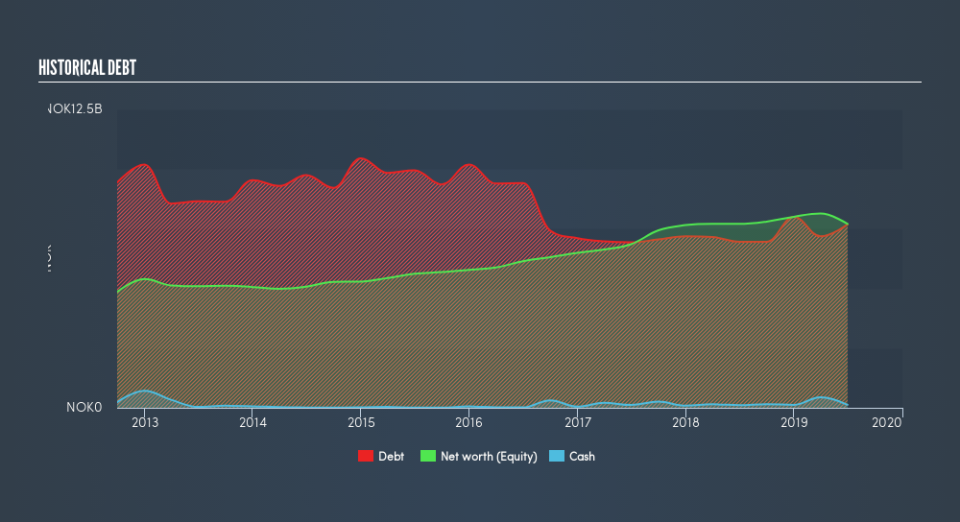What Does Norwegian Property ASA's (OB:NPRO) Balance Sheet Tell Us About It?

Want to participate in a short research study? Help shape the future of investing tools and you could win a $250 gift card!
While small-cap stocks, such as Norwegian Property ASA (OB:NPRO) with its market cap of øre5.9b, are popular for their explosive growth, investors should also be aware of their balance sheet to judge whether the company can survive a downturn. Understanding the company's financial health becomes essential, as mismanagement of capital can lead to bankruptcies, which occur at a higher rate for small-caps. The following basic checks can help you get a picture of the company's balance sheet strength. Nevertheless, these checks don't give you a full picture, so I suggest you dig deeper yourself into NPRO here.
NPRO’s Debt (And Cash Flows)
NPRO has built up its total debt levels in the last twelve months, from øre7.0b to øre7.7b , which accounts for long term debt. With this rise in debt, NPRO's cash and short-term investments stands at øre129m , ready to be used for running the business. Additionally, NPRO has generated cash from operations of øre182m during the same period of time, resulting in an operating cash to total debt ratio of 2.4%, signalling that NPRO’s operating cash is less than its debt.
Can NPRO meet its short-term obligations with the cash in hand?
Looking at NPRO’s øre1.3b in current liabilities, it appears that the company arguably has a rather low level of current assets relative its obligations, with the current ratio last standing at 0.98x. The current ratio is calculated by dividing current assets by current liabilities.
Does NPRO face the risk of succumbing to its debt-load?
With a debt-to-equity ratio of 100%, NPRO can be considered as an above-average leveraged company. This is a bit unusual for a small-cap stock, since they generally have a harder time borrowing than large more established companies. We can test if NPRO’s debt levels are sustainable by measuring interest payments against earnings of a company. Ideally, earnings before interest and tax (EBIT) should cover net interest by at least three times. For NPRO, the ratio of 2.27x suggests that interest is not strongly covered, which means that lenders may be more reluctant to lend out more funding as NPRO’s low interest coverage already puts the company at higher risk of default.
Next Steps:
Although NPRO’s debt level is towards the higher end of the spectrum, its cash flow coverage seems adequate to meet debt obligations which means its debt is being efficiently utilised. However, its lack of liquidity raises questions over current asset management practices for the small-cap. I admit this is a fairly basic analysis for NPRO's financial health. Other important fundamentals need to be considered alongside. I suggest you continue to research Norwegian Property to get a more holistic view of the stock by looking at:
Future Outlook: What are well-informed industry analysts predicting for NPRO’s future growth? Take a look at our free research report of analyst consensus for NPRO’s outlook.
Valuation: What is NPRO worth today? Is the stock undervalued, even when its growth outlook is factored into its intrinsic value? The intrinsic value infographic in our free research report helps visualize whether NPRO is currently mispriced by the market.
Other High-Performing Stocks: Are there other stocks that provide better prospects with proven track records? Explore our free list of these great stocks here.
We aim to bring you long-term focused research analysis driven by fundamental data. Note that our analysis may not factor in the latest price-sensitive company announcements or qualitative material.
If you spot an error that warrants correction, please contact the editor at editorial-team@simplywallst.com. This article by Simply Wall St is general in nature. It does not constitute a recommendation to buy or sell any stock, and does not take account of your objectives, or your financial situation. Simply Wall St has no position in the stocks mentioned. Thank you for reading.

